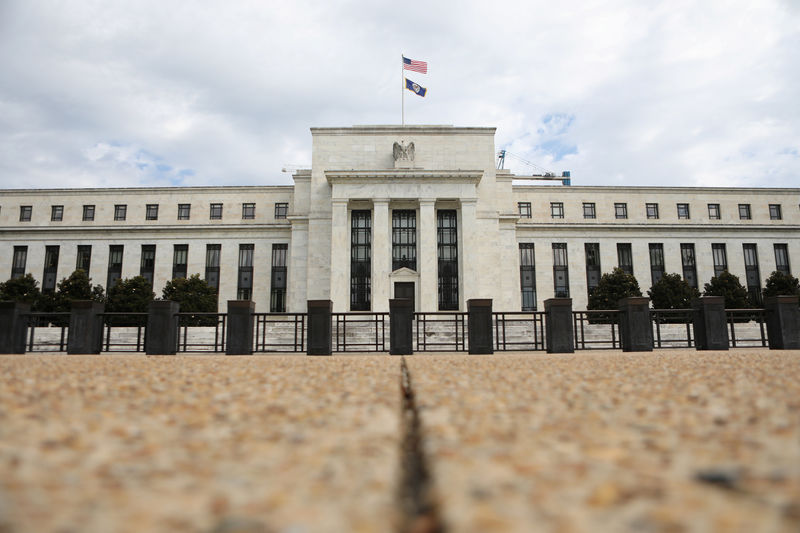By Lucia Mutikani
WASHINGTON (Reuters) - U.S. consumer prices rose less than expected in August as increases in gasoline and rents were offset by declines in healthcare and apparel costs, and underlying inflation pressures also appeared to be slowing.
Despite the moderate consumer price increases last month, inflation remains underpinned by a tightening labor market and robust economic growth. Labor market strength was reinforced by other data on Thursday showing the number of Americans filing for unemployment aid dropped last week to near a 49-year low.
"With labor market conditions tight, wage growth accelerating and input prices being pushed up by capacity constraints and recently imposed tariffs, there is plenty of upward pressure on prices," said Paul Ashworth, chief U.S. economist at Capital Economics in Toronto.
The Consumer Price Index increased 0.2 percent last month after a similar gain in July. In the 12 months through August, the CPI rose 2.7 percent, slowing from July's 2.9 percent advance. Excluding the volatile food and energy components, the CPI edged up 0.1 percent. The so-called core CPI had increased by 0.2 percent for three straight months.
In the 12 months through August, the core CPI gained 2.2 percent after rising 2.4 percent in July. Economists polled by Reuters had forecast the CPI climbing 0.3 percent and the core CPI gaining 0.2 percent in August.
The inflation report came on the heels of data on Wednesday showing producer prices falling in August for the first time in 1-1/2 years.
The dollar, which has gained more than 6 percent this year against the currencies of the United States' main trade partners, is weighing on the prices of goods such as apparel.
August's tepid consumer price gains did not change expectations that the Federal Reserve will raise interest rates at its Sept. 25-26 policy meeting. The U.S. central bank has lifted rates twice this year.
The Fed tracks a different inflation measure, the personal consumption expenditures (PCE) price index excluding food and energy, for monetary policy. The core PCE price index increased 2.0 percent in July, hitting the Fed's 2 percent target for the third time this year.
"Of course there is always significant month-to-month volatility in the subcomponents, but looking out longer-term we continue to believe that the most likely outcome is a gradual firming in consumer price inflation," said Michael Feroli, an economist at JPMorgan (NYSE:JPM) in New York. "At this point in the cycle the Fed's concerns appear to be shifting from undesirably low inflation to undesirably high inflation."
An escalating trade war between the United States and China is expected to drive up inflation. President Donald Trump last week threatened duties on another $267 billion worth of Chinese goods on top of a $200 billion tariff list that is awaiting his decision. Washington already has slapped duties on $50 billion worth of Chinese imports, provoking retaliation from Beijing.
Minutes of the U.S. central bank's July 31–Aug. 1 meeting published last month showed "several participants commented that increases in the prices of particular goods, such as those induced by the tariff increases, would likely be one source of short-term upward pressure on the inflation rate."
The dollar fell against a basket of currencies on the inflation data and also as the European Central Bank left interest rates unchanged, staying on track to end bond purchases this year and raise rates next autumn.
U.S. Treasury yields dipped while stocks on Wall Street were trading higher.
RENTS RISING
Last month, gasoline prices rebounded 3.0 percent after dropping 0.6 percent in July. Food prices edged up 0.1 percent, matching July's rise. Food consumed at home was unchanged.
Owners' equivalent rent of primary residence, which is what a homeowner would pay to rent or receive from renting a home, rose 0.3 percent in August after advancing by the same margin in the prior month. The rent index shot up 0.4 percent.
Healthcare costs decreased 0.2 percent for a second straight month as prices for doctor and hospital services fell. Apparel prices tumbled 1.6 percent, the biggest drop since 1949. It was the third straight monthly decline in apparel prices.
New motor vehicle prices were unchanged last month, but the cost of used cars and trucks rose for a third consecutive month.
In another report on Thursday, the Labor Department said initial claims for state unemployment benefits slipped 1,000 to a seasonally adjusted 204,000 for the week ended Sept. 8, the lowest level since December 1969.
Economists had forecast claims rising to 210,000 in the latest week. The four-week moving average of initial claims, considered a better measure of labor market trends as it irons out week-to-week volatility, fell 2,000 last week to 208,000, also the lowest level since December 1969.
The labor market continues to strengthen, with nonfarm payrolls increasing by 201,000 jobs in August and annual wage growth notching its biggest gain in more than nine years. Job openings hit an all-time high of 6.9 million in July.
The Fed's Beige Book report, which was published on Wednesday, described the labor market as "tight throughout the country, with most districts reporting widespread shortages."
